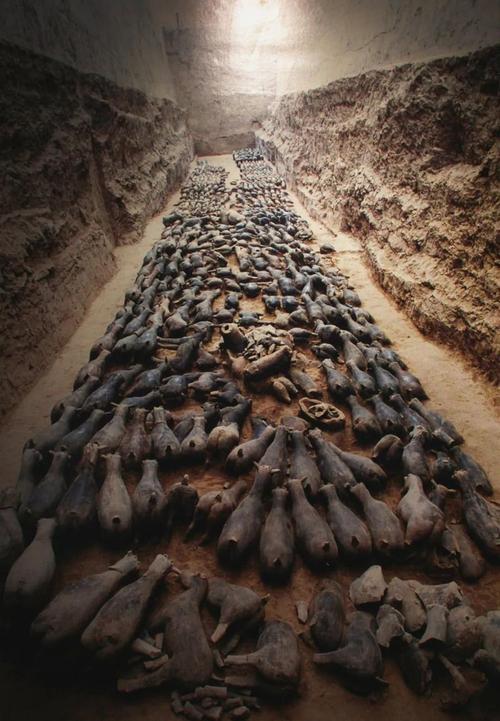
What Lies Beneath: Unraveling the Contents of Ancient Chinese Tombs
The grandeur of ancient Chinese civilization is reflected not only in their majestic palaces and intricate artifacts but also in the elaborate burial practices they observed. Ancient Chinese tombs, particularly those of emperors and nobles, were more than just places of rest; they were meticulously designed microcosms meant to provide the deceased with all the comforts and luxuries they enjoyed in life, ensuring a smooth transition into the afterlife.
A Glimpse into the Afterlife: Grave Goods and Their Significance
The ancient Chinese believed in an afterlife that mirrored the earthly realm, and this belief is vividly reflected in the objects they buried with their deceased. Tombs were often designed to resemble palaces, complete with courtyards, chambers, and even drainage systems.
Ceremonial Vessels and Implements: Tools for the Afterlife
Among the most common finds in ancient Chinese tombs are an array of ceremonial vessels, predominantly crafted from bronze. These vessels, often adorned with intricate designs and mythical creatures, served both ritualistic and practical purposes.
- Ritualistic Vessels: These vessels, including ding (tripod cauldrons), gui (food containers), and zun (wine vessels), were used in ancestral worship ceremonies and were believed to facilitate communication with the divine. Their presence in tombs reflects the importance of ancestral veneration in ancient Chinese culture.
- Practical Implements: Tombs also contained bronze mirrors for grooming, weapons for protection in the afterlife, and musical instruments to provide entertainment, reflecting the belief that the deceased would continue to engage in these activities in the afterlife.
Clothing and Food: Provisions for the Journey
Preserving the body and providing sustenance for the afterlife were crucial aspects of the burial rituals.
- Elaborate Garments: The deceased were often dressed in their finest silk garments, sometimes adorned with jade ornaments, signifying their status and wealth. Jade, believed to have protective and spiritual qualities, was also frequently placed on the body.
- Food Offerings: To nourish the deceased on their journey, tombs contained remnants of food offerings, including grains, meats, and fruits. In elite tombs, elaborate banquets were sometimes recreated using pottery replicas.
Sacrifices: Servants for Eternity
The practice of human sacrifice, while declining over time, was present in some periods, particularly during the Shang dynasty.
- Human Sacrifices: The tombs of rulers might contain the remains of sacrificed individuals, believed to be servants, concubines, or even officials meant to accompany and serve the deceased in the afterlife. This practice underscores the absolute power wielded by rulers and the belief in an afterlife mirroring the social hierarchy of the living world.
- Animal Sacrifices: More common were animal sacrifices, with horses, dogs, and other domesticated animals interred with the deceased. Horses were particularly significant as they were believed to transport the soul to the afterlife.
Unveiling the Past, Piece by Piece
The contents of ancient Chinese tombs offer invaluable insights into the beliefs, rituals, and social structures of these bygone eras. Each artifact, from the simplest pottery shard to the most elaborate bronze vessel, serves as a tangible link to the past, helping historians and archaeologists piece together the rich tapestry of ancient Chinese civilization.
Q&A
Q: What is the significance of jade in ancient Chinese tombs? A: Jade was highly prized in ancient China for its beauty and durability. It was believed to have protective and spiritual qualities and was often placed on the body of the deceased to prevent decay and facilitate their journey to the afterlife.
Q: Why were horses often buried with the deceased? A: Horses were highly valued in ancient China, particularly for warfare and transportation. In the context of burial rituals, horses were believed to act as psychopomps, guiding the soul of the deceased to the afterlife.
Q: Did the practice of human sacrifice continue throughout Chinese history? A: While human sacrifice was practiced in ancient China, particularly during the Shang dynasty, it gradually declined over time and was largely replaced by symbolic offerings.
note: This return of all, without the author's permission, may not be reproduced